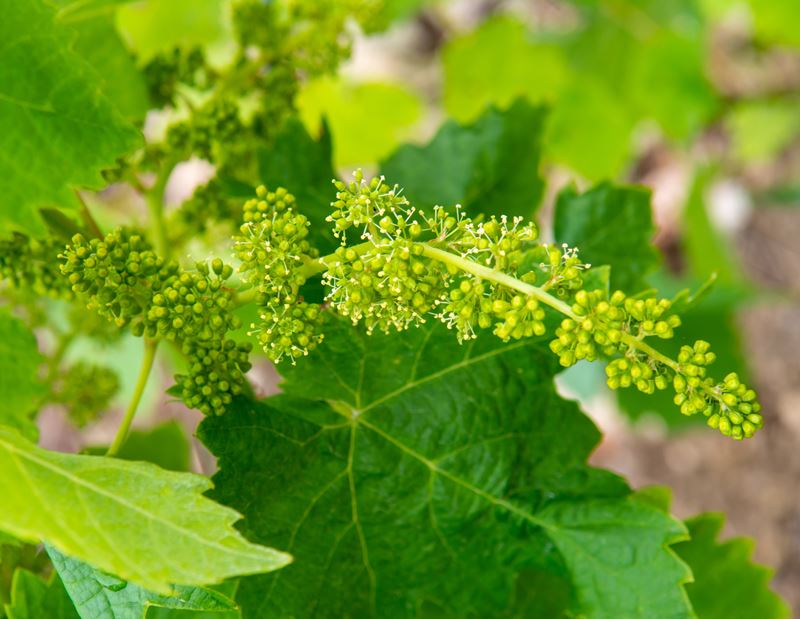
In the vineyards of Europe and across winemaking regions in the United States, the arrival of late spring brings with it a quiet but essential transformation. The flowering of grapevines, a subtle biological event that occurs between May and June depending on the climate, marks the beginning of the growing season's most crucial stages. Though small and largely unnoticed by the untrained eye, these flowers initiate the process that will determine the year's grape harvest and, ultimately, the quality of the wine produced.
Grapevines, specifically Vitis vinifera, are hermaphroditic, meaning each flower carries both male and female reproductive parts. This feature allows for self-pollination, a key adaptation in viticulture that increases the chances of consistent fruit production. The flowers appear as part of a tight cluster, structurally similar to the grape bunches they will become. Unlike the vibrant, pollinator-attracting blooms of other crops, grapevine flowers lack showy petals. Instead, they are enclosed in a green cap known as a calyptra. This cap eventually falls away, exposing the flower's reproductive organs for pollination.
The flowering phase typically lasts one to three weeks and its success is heavily dependent on environmental conditions. Ideal temperatures and dry weather support pollination, while cold, rain or high winds can severely disrupt it. In cases of poor weather, the number of fertilized flowers may drop, which can lead to a lower yield during harvest. In viticulture, this phenomenon is referred to as poor fruit set or "coulure."
Once fertilization occurs, the vine enters the fruit set phase, where flowers begin transforming into small, hard green berries. These nascent grapes begin their journey toward ripeness, a process influenced by the vine's health and the availability of nutrients and water. The quantity and uniformity of the fruit set are key indicators of the potential harvest size, while also offering early insights into grape quality.
For vineyard managers and winemakers, the flowering period is closely watched. It is one of the first clear indicators of the growing season's trajectory. If flowering proceeds smoothly, it sets a strong foundation for healthy grape development. If not, adjustments may be necessary to manage vine balance or anticipate a smaller crop.
The importance of the flowering phase extends beyond the vineyard. Winemakers rely on a consistent and healthy fruit set to craft wines that meet quality standards. Grape characteristics influenced by flowering—such as size, skin thickness and seed development—can affect everything from juice yield to tannin structure, acidity and aromatic potential. Understanding this stage helps winemakers prepare for fermentation decisions, blending strategies and aging plans months in advance.
The flowering of the vine is one of the most discreet stages in winemaking, but it is also among the most significant. Without the quiet success of this phase, the possibility of crafting a great wine diminishes. In every bottle, there is a trace of these early flowers, which carry within them the promise of the vintage.
Founded in 2007, Vinetur® is a registered trademark of VGSC S.L. with a long history in the wine industry.
VGSC, S.L. with VAT number B70255591 is a spanish company legally registered in the Commercial Register of the city of Santiago de Compostela, with registration number: Bulletin 181, Reference 356049 in Volume 13, Page 107, Section 6, Sheet 45028, Entry 2.
Email: [email protected]
Headquarters and offices located in Vilagarcia de Arousa, Spain.